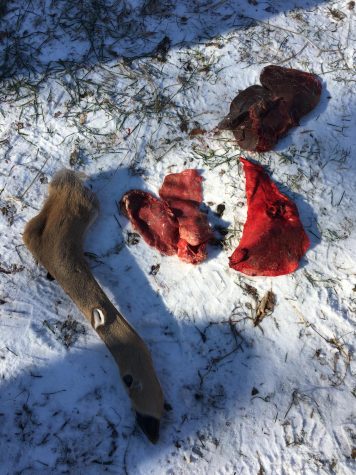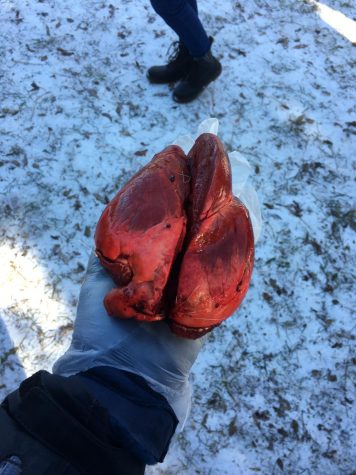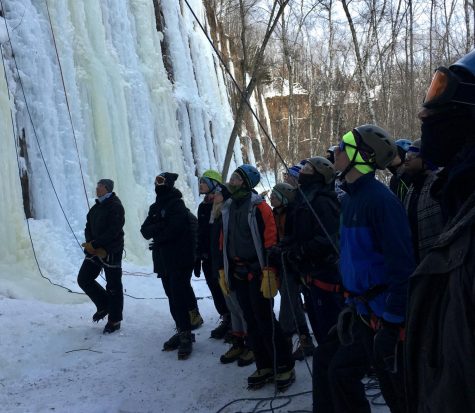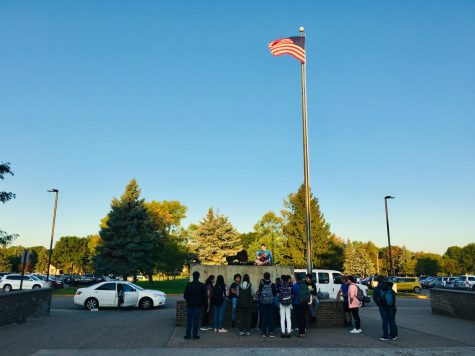BHS Snapshot: ODA Deer Dissection
Students get a close up look at what it’s like to be a deer. FYI: This article contains images of deer organs.
BUNKER HILLS REGIONAL PARK – Seniors from Outdoor Adventures and Juniors from CEMS Environmental Sustainability accompanied by Mr. Osmek and Mr. Riordan ventured into the woods and came upon a clearing where two deer carcasses lay. It was unbearably cold, but this kept the stench from the corpses from becoming overpowering. Students squeezed plastic gloves over their regular winter gloves and the dissection commenced.
The deer had been donated to Blaine ODA, but the time and cause of death of the deer are unknown. Riordan said this “Lets you take it from a forensic biology standpoint, not just from a hunter’s perspective.” He noted the skin of the deer had become green, so it had been dead for a while.
Osmek plucked deer fur off of the hide and explained how each piece was hollow so it could trap air and act as a superior insulator.

Riordan and Osmek passed around deer organs for students to examine. First came a deer leg with a distinct musky odor coming from its glands. Bucks scrape their legs to release their signature scent that does track down. “It’s the deer’s dating app,” said Riordan. Another feature in the bone was a fracture. This, along with the internal bleeding and bruising in the deer’s abdomen could be used to speculate how the deer met its death.
Later the deer leg went missing. Blueprint advises students to use common sense before deciding to snatch a dead deer leg.
The deer lung was a very light and spongy organ with ribbed openings to the airway. Students were also able to touch the diaphragm, a muscular organ that does all the work contracting the lungs and separates the abdomen from the chest.

Next was the deer heart. It was four-chambered like a human’s and dense and muscular from a lifetime of running as a deer.

Many students were surprised when they examined the stomach, as they expected its interior to appear smooth. “It’s like a carpet,” said Riordan, “It increases the surface area of the stomach to improve digestion.”
The final organ was the ear, which Osmek cut off and then named the deer Vincent Van Gogh.
Riordan hoped this experience would help students to be more connected to where their food may come from, and understand the process it goes through from living animal to the dinner table.













